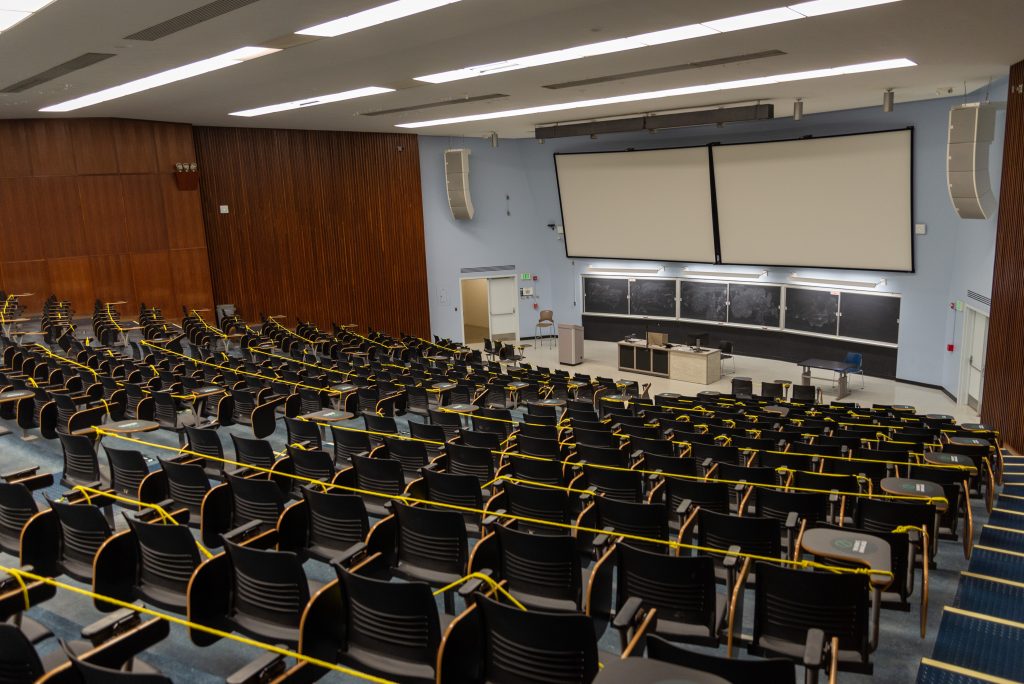As students and professors reach nearly a full year of in-person classes, one aspect remains an issue — large class sizes.
Last Friday, on March 11, the Center for Learning and Teaching organized a panel of Binghamton University faculty to discuss their experiences with and techniques used in teaching large lectures. Panelists ranged from faculty in the Harpur College of Arts and Sciences to faculty in the Thomas J. Watson School of Engineering and Applied Science and the School of Management.
One of the first questions posed to the panelists asked them to explain how they gauged students’ understanding of the material in large classes.
Kirill Zaychik, a lecturer of mechanical engineering, described the challenges he and other professors had faced during online classes.
“Especially last year when everything was remote, the experience from the delivering end of a lecture to a large audience was very unnerving in my case because students [didn’t] use cameras and [were] reluctant to unmute themselves and ask a question verbally — they are more likely to type,” Zaychik said. “That was something that [it had] forced me to get used to. That was a learning curve on my part.”
To gauge students’ interest and attention currently, Zaychik said professors needed to implement a more engaged approach, taking time to observe the attention levels of students during classes, and to implement interactive teaching strategies like question and answer sessions, which constantly “force feedback.”
Benjamin Turnpenny, an instructor of chemistry, said he often tried to use innovative ways to hold students’ attention, including humor in lectures. For other students, Turnpenny said faculty have tried to make themselves available.
“For the ones [whose] lack of engagement are affecting their grades, this semester we’ve opened up, between me and the other faculty members, we’re posting times for the students to be able to reserve,” Turnpenny said. “Just time to talk about how they can better perform in the class, [if] they feel like they are putting in all this effort but not seeing the results [then] what are different strategies to try and build that.”
Turnpenny also said his teaching assistants were being trained in ways to facilitate consistent engagement in all members of group work, to ensure all students were involved.
Another question asked professors whether they were able to foster individual connections with students in large lectures or whether they rather viewed their classes as a collective of students.
Cláudia Marques, an associate professor of biology, said she often sought to establish a connection by seeking out students who are in need of support.
“Generally speaking, it’s harder to engage with all students and to get to know every student in your class,” Marques said. “You’ll know the ones that will talk to you more [and] engage with you more. In my case, if I see that someone is really not engaging and [there] is something wrong, I will go out of my way to talk to that student.”
George Bobinski, associate dean of the School of Management, said he often tried to foster connections through assignments in the classroom to reach students who he had not already formed a relationship with.
“I think it is a certain percentage of students, maybe 10 or 15 percent, that will engage you after class, during class, participate in a very high level — and you’ll get to know those students pretty well,” Bobinski said. “In my case though, every student does one presentation, even in a very large class, so I do get to know them a little bit in that particular path.”
In a question posed to the panelists asking what they enjoyed about teaching large class sizes, Turnpenny said he appreciated the diversity of students in his lectures, which influenced him as a professor.
“There’s a variety of student backgrounds, and a lot of different personalities in my students,” Turnpenny said. “So it challenges me to be adaptive in the classroom, to communicate a concept to them in different ways. I’ll have my way of explaining it initially, then I get a good question that maybe needs a clarification, so I can go in a different way with my explanation.”



